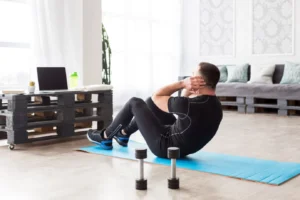


Resistance training, or strength training for osteoporosis, refers to exercises that involve
resistance – using weights, resistance bands, or only one’s body weight. Such exercises
load the muscles and challenge the bones and thus promote their strengthening and growth.
This paper aims to explain how exactly resistance training can prevent osteoporosis, say
when it is better to start and offer advice on how to include it in one’s life.
Resistance training, also called strength training, refers to exercises that work against
resistance, such as weights, resistance bands, or body weight. It can play a vital role in
preventing osteoporosis by:

Resistance training is one of the most effective ways to prevent osteoporosis and keep your bones strong. By making resistance training a part of your routine, you can significantly reduce your chances of breaking your bones and live a healthier, more active life. Remember to consult your doctor and begin resistance training today.
Caerus Strength Inc. can provide personalized guidance and support to help you achieve your bone health goals.
Here at Caerus Strentgh we share useful information and provide solutions on daily routine exercise and workouts.
Privacy Policy | Sitemap
Copyright © 2025 Caerus Strength Inc. All Rights Reserved. Designed & Developed by SWFLMC
Karl, a graduate of the University of Michigan Engineering College in 1978 and Law School in 1981, has been a practicing trial lawyer in Chicago, Illinois for the last 41 years. After graduating from the University of Michigan Engineering College in 1978 and Law School in 1981, he practiced at the law firms of Williams & Montgomery, Ltd., Dressler Goldsmith and Fitch Even (since 1995). He is admitted to practice in the United States Patent & Trademark Office. Since 1989, Karl has conducted a variety of lawsuits relating to intellectual property, with a focus on patent litigation and suits seeking recovery for patent infringement. Karl served as managing partner of the Fitch Even firm for six years, and is co-chair of the firm’s Litigation Practice Group. A link to his Fitch Even bio is here: https://www.fitcheven.com/?t=3&A=2581&format=xml&p=5482.